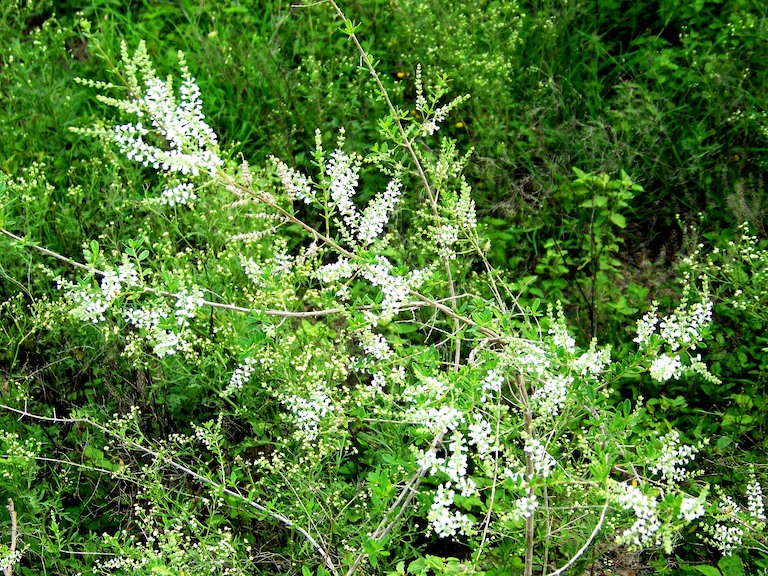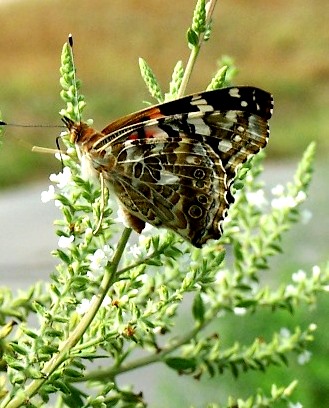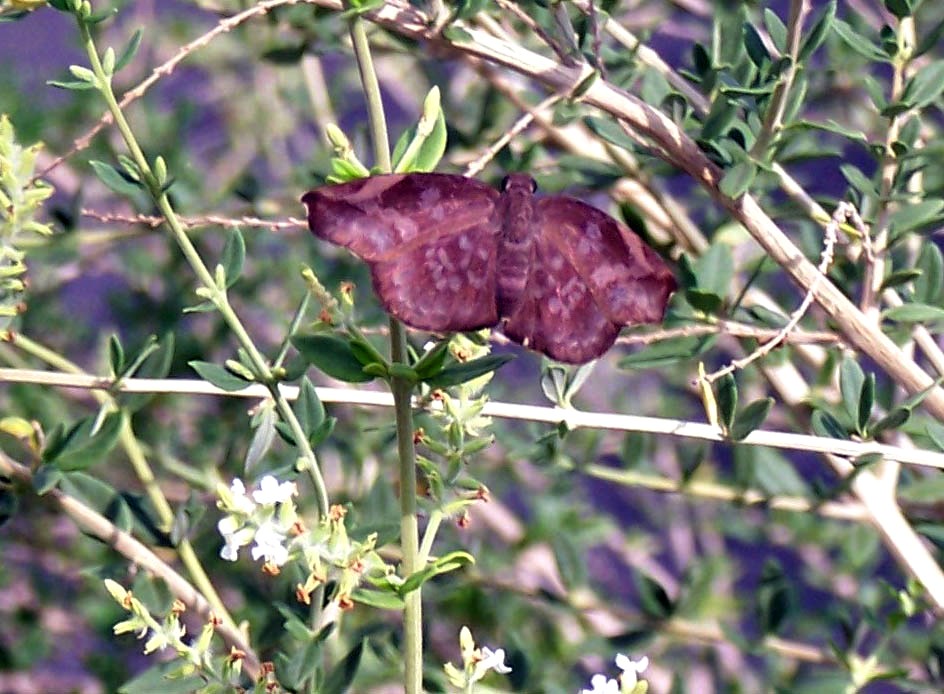by FrankWiseman

If you are ever out in a park or brushland and you smell something sweet, it might be the smell of vanilla coming from a Whitebrush shrub. Aloysia gratissima, also called Beebrush, and other common names, is a member of the Vervain family.
My first experience with this plant was at Harlingen’s Hugh Ramsey Nature Park back around 2000 when I joined other volunteers with Arroyo Colorado Audubon Society (ACAS) to help preserve, enhance, and maintain plants in the park. One morning while I was in an area that had been dubbed The Christian Garden, I saw this beautiful white-flowering shrub draped with butterflies. No wonder the butterflies liked this sweet-smell-of-vanilla plant for pollen gathering, for as a human, I, too, was attracted. I found out the plant’s name and decided that if I wanted a butterfly attracting plant in my yard, it had to be a Whitebrush shrub.

Back in 2002, when I helped form our chapter of Texas Master Naturalists, one of my training class table mates was Max Pons, director of the Nature Conservancy in Brownsville—located just east of Sabal Palms. Max allowed our chapter members to do volunteer work at the Conservancy in those days. He had a special area near the huge barn and office where he grew a variety of seedlings and larger plants to use in habitat restoration. One of these was a large grouping of Whitebrush shrubs. Again, I saw how the butterflies were drawn to it like a magnet.

To describe the shrub that you, too, may want in your garden, know that it grows easily in our soil here in the Valley which can vary from clay, sandy, caliche, or gravelly. It is a slender, densely-branched shrub with long spikes of white flowers, blooming from spring through fall. Look for it to bloom especially after a rainfall.
It is not wide-spreading, but can reach heights of 10 or more feet. It often can suffer wind-blown effects to its shape. Its smooth branches mean it’s safe for kids to be around. The leaves are small, green, slender, rounded to pointed tips, and the seeds are a small berry that has two nutlets enclosed in a calyx.

It can be planted in an area requiring very little water. It could be planted in groupings as a hedge or screen to hide an unsightly area or a nosy neighbor. It is not toxic to humans, but is toxic to deer, horses, mules, and burros. So, your yard is a pretty safe area. Other characteristics to know about this shrub: it is deciduous and freeze and heat tolerant. It is rather fast-growing– something good to know for the impatient gardener. If you think of propagation, remember it is best to use cuttings sinceplanting by seeds is very difficult. You probably will want to try buying your plants from one of our local nurseries, like Mike Heep.
This is only one among hundreds of bee, butterfly and bird attracting plants that you might select from the myriad Valley natives available to you. Just remember: Plant Natives in your own landscape, whether it be small or large.

Leave a Reply